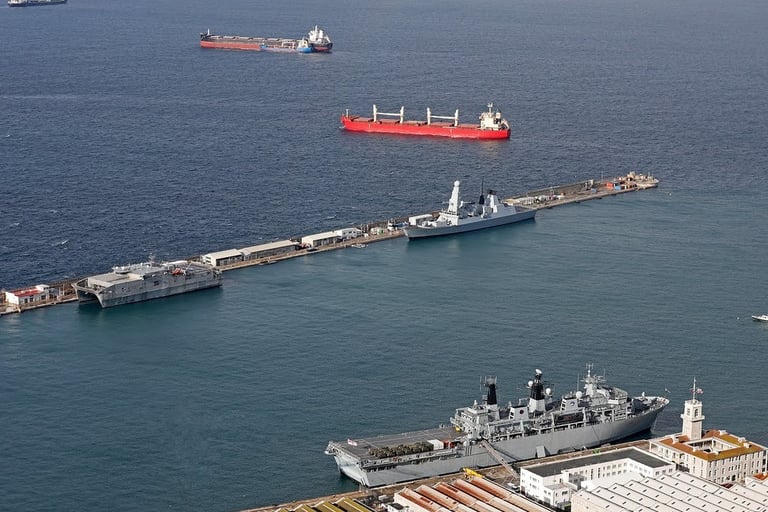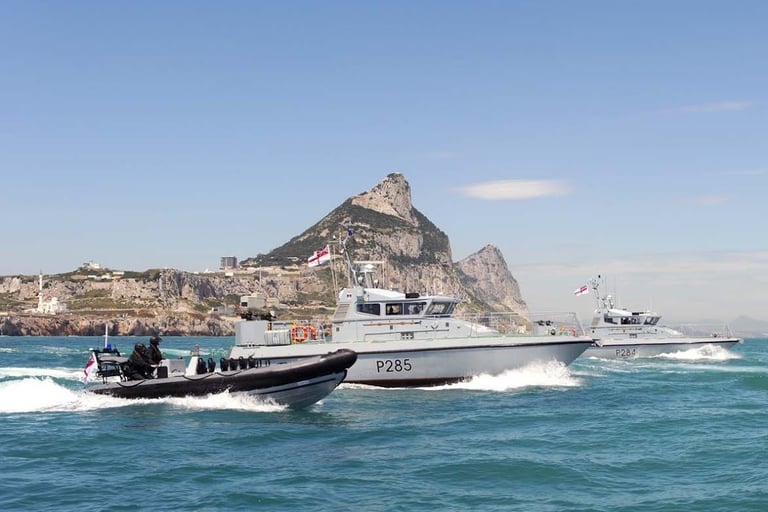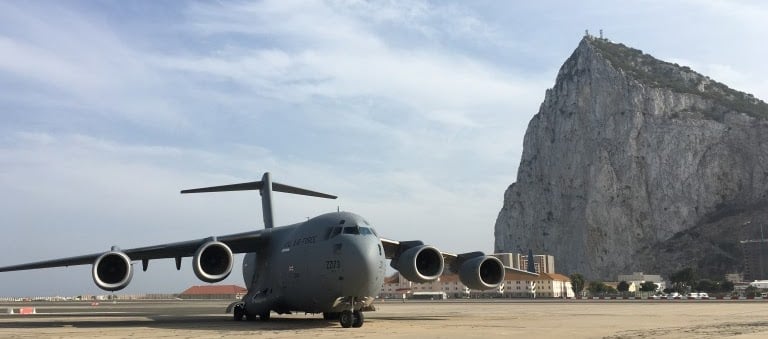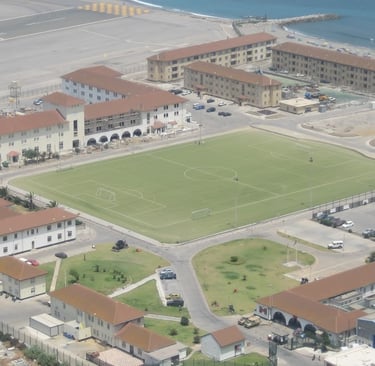British Forces Gibraltar: What components form the unique relationship between HM Armed Forces and the Rock?
Gibraltar is famous for its historic connections to the military - from the British Army fiercely defending it from Spanish attacks during the sieges, to it becoming a fortress during WWII and acting as a major naval base in the days of empire.
NEWS FROM THE OVERSEAS TERRITORIESGIBRALTARRESEARCH
Gibraltar is famous for its historic connections to the military - from the British Army fiercely defending it from Spanish attacks during the sieges, to it becoming a fortress during WWII and acting as a major naval base in the days of empire. But its connections to the military are far from just historic, Gibraltar remains an important base for all three branches of the Armed Forces, and the military remains an important organisation for the people of Gibraltar.
Today, the military personnel on the Rock are organised as ‘British Forces Gibraltar’ (BFG), usually commanded by a Naval Officer of the rank of Commodore. It composes units from all three branches of the Armed Forces, showing just how useful Gibraltar is to the military’s global operations.
Starting with ‘the senior service’, the Royal Navy’s presence in Gibraltar is less than in the past, as Britain’s naval capabilities have declined, but nevertheless remains strong. The Royal Navy operations in Gibraltar are twofold. One part is the operation of HMNB (Her Majesty’s Naval Base) Gibraltar. Whilst this is much smaller than in the past, and whilst much of what was the naval base has now been sold off to civilian firms, the base remains a crucial stop off point for Royal Navy and allied ships traveling across the world. If you visit Gibraltar, it is likely that there will be at least one British or American ship in port when you’re there, ranging from Destroyers to Aircraft Carriers. Most ships traveling to the South Atlantic, or into the Med and then through Suez to the Indian Ocean and beyond, stop off at Gibraltar for refuelling and resupplying, which shows just how vital the Rock is for the Royal Navy’s global operations.


British and American warships docked at HMNB Gibraltar
The second part of Royal Navy operations in Gibraltar is protecting the British Gibraltarian Territorial Waters. This role is carried out by the Gibraltar Squadron, which consists of two Scimitar-Class fast patrol boats - HMS Scimitar and HMS Sabre - along with 3 Pacific 24 RHIBs. The squadron is tasked with protecting the waters and shores of Gibraltar, as well as providing maritime security in the area and protecting visiting and passing British and allied warships. It’s main role at the moment is countering the frequent territorial infringements by Spanish warships and other state vessels, ensuring they keep out of British Gibraltarian waters. Unfortunately, these kinds of infringements happen multiple times a week, and the RN Gibraltar Squadron is responsible for ensuring they stay clear of British waters and out the way of shipping.
There is a possibility that Gibraltar will become the base of a new ship at some point this year, which would be the first time in many years that a Royal Navy ship except for the small boats of the Gibraltar Squadron would be based on the Rock. An online post from the Royal Navy hinted than a new River Class Offshore Patrol Vessel would be based in Gibraltar, to conduct operations in the Med and around North Africa, but this post was deleted (likely as a result of diplomatic issues with Spain), so it's unsure if this will be the case.


Boats from the Royal Navy Gibraltar Squadron on patrol in the British-Gibraltarian Territorial Waters
Moving onto the Royal Air Force, Gibraltar is also a useful stop off point for military aircraft, as well as a unique runway for training. The runway is owned by the MOD, but shared with the civilian authorities to operate as the Gibraltar Airport. It is famous for the fact that, when aircraft aren’t taking off or landing, it becomes a road, with cars and pedestrians crossing it. There are no RAF aircraft permanently based there, although there is a decommissioned Jaguar jet as the gate guardian.


The Regiment takes part in local ceremonial duties, such as guarding the Governor’s residence, as well as doing training in Gibraltar, the UK and across the world. Unlike other home defence regiments in British Overseas Territories, the RGR is an intrinsic part of the British Army, and RGR soldiers have served in Northern Ireland, Bosnia, Kosovo, Iraq and Afghanistan with the British Army.


The Regiment takes part in local ceremonial duties, such as guarding the Governor’s residence, as well as doing training in Gibraltar, the UK and across the world. Unlike other home defence regiments in British Overseas Territories, the RGR is an intrinsic part of the British Army, and RGR soldiers have served in Northern Ireland, Bosnia, Kosovo, Iraq and Afghanistan with the British Army.
A Royal Air Force C-17 Globemaster at RAF Gibraltar
Soldiers of the Royal Gibraltar Regiment parading in front of HE The Governor


Devil's Tower Camp, base of the Royal Gibraltar Regiment
The Army also maintains many miles of tunnels in the Rock. Whilst most of the network was handed over to the Gibraltar Government in the 1960s, large sections still remain in MOD hands. Whilst my tour guide when visiting the WWII tunnels said the MOD tunnels are ‘the British Area 51’ (something I would like to believe), they are in fact used for training by the UK Armed Forces, providing a unique environment. There is also a training area on the South of the Rock that the RGR and visiting troops use.
In addition to the Army, RAF and Royal Navy units, the Gibraltar Defence Police is also an important component of British Forces Gibraltar. Whilst it is a civilian police force, it reports to the Commander British Forces Gibraltar. Its role is to guard and enforce law on MOD property in Gibraltar, performing a similar job to the MOD Police in the UK. The GDP also has a maritime unit, which operates two RHIBs. These serve alongside the RN Gibraltar Squadron in protecting RN facilities and warships.
As you can see, Gibraltar is an incredibly useful location to all three branches of the Armed Forces. And the Armed Forces play an important role in protecting Gibraltar and its people from various threats. This relationship is incredibly important, and both the military and the people of Gibraltar highly value each other. And in recent weeks, as the Royal Gibraltar Regiment have helped construct a nightingale hospital at Europa Point to help with the Coronavirus crisis, it's become clear just how crucial this relationship is.
